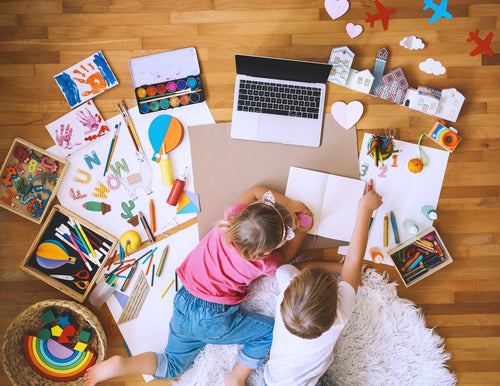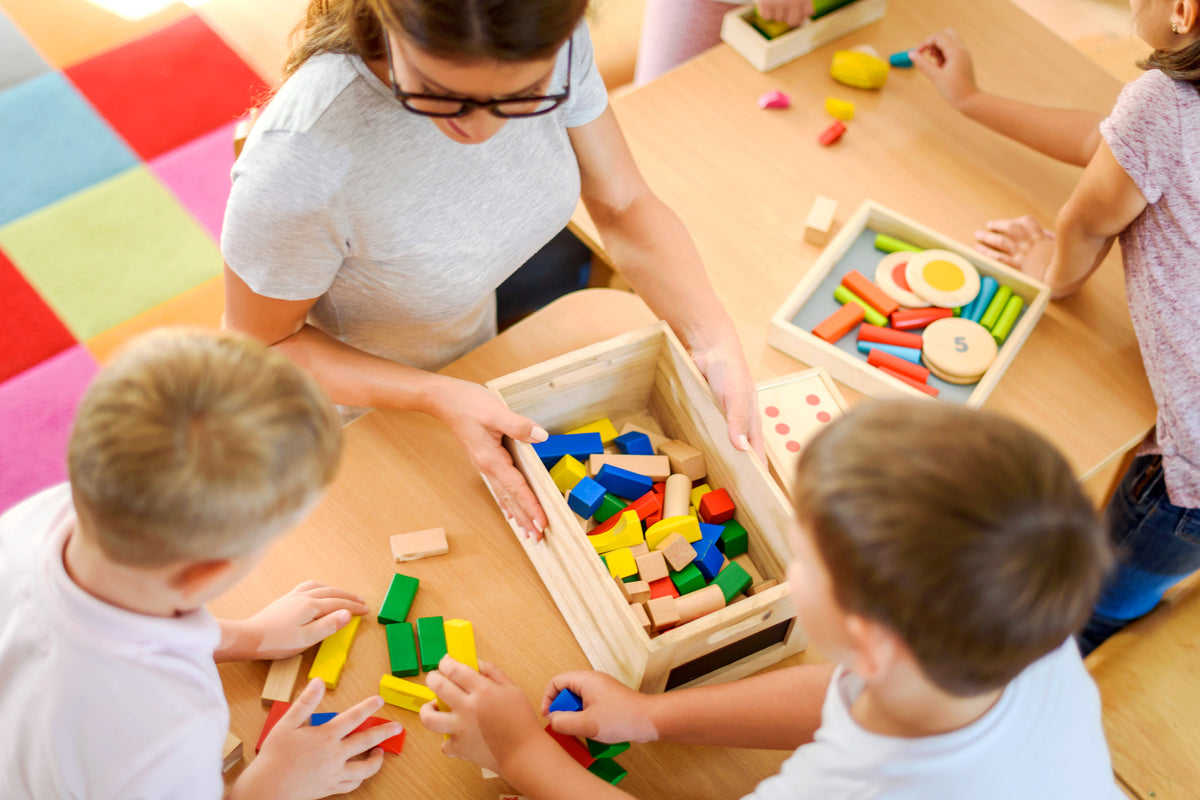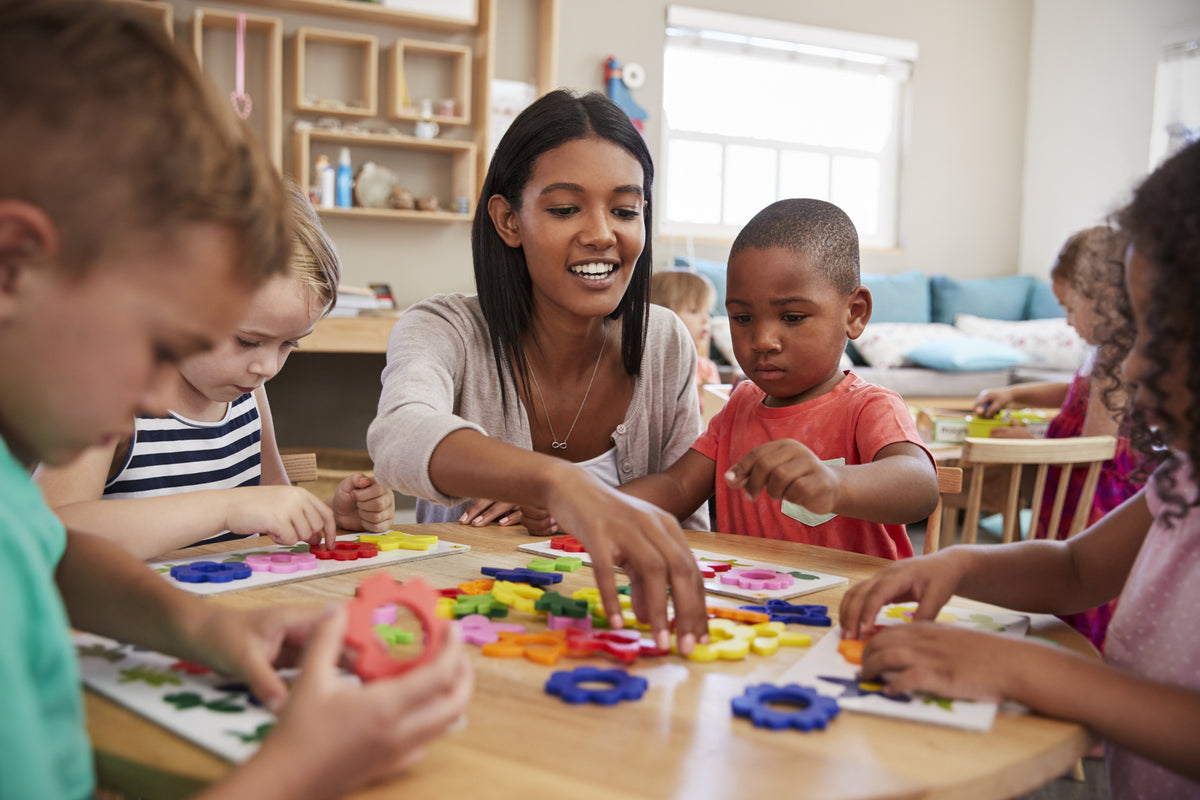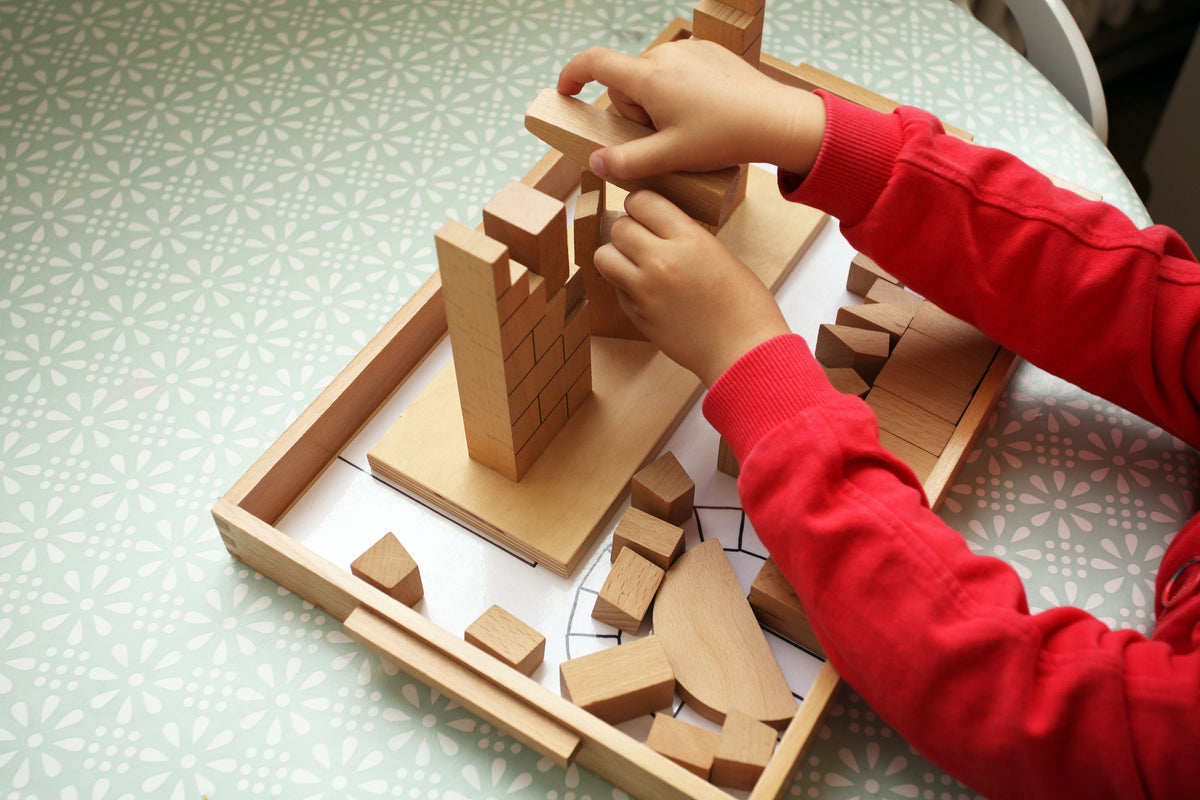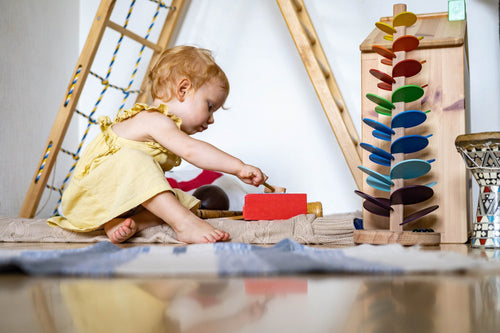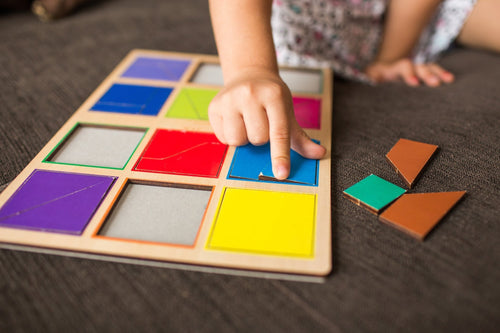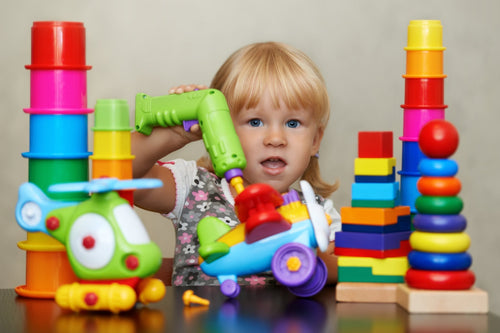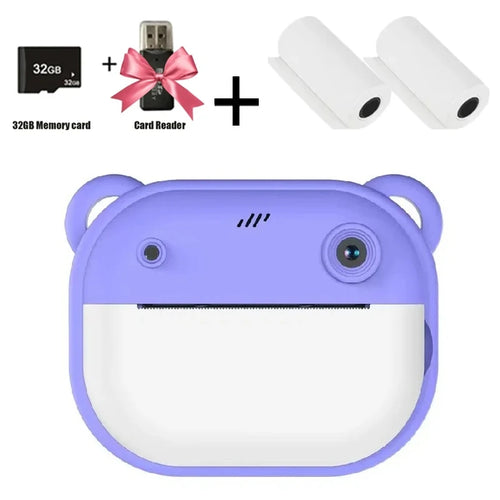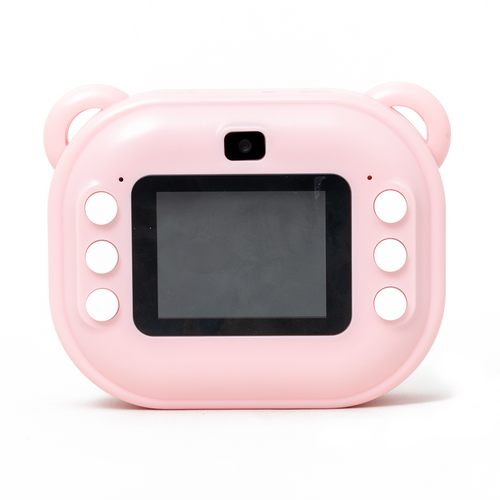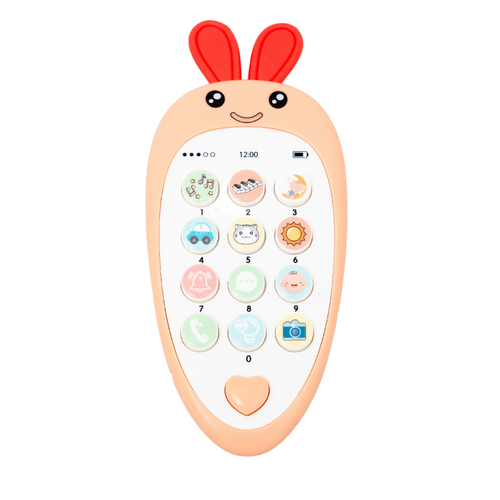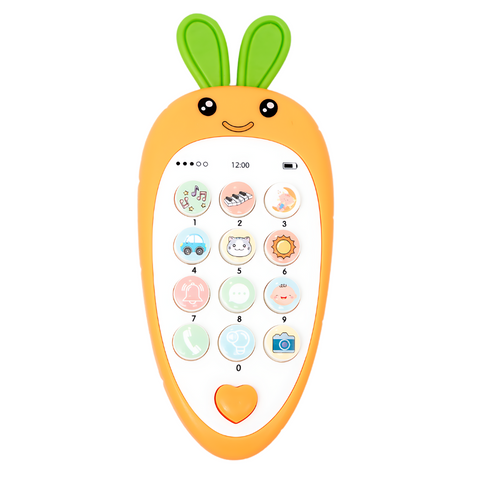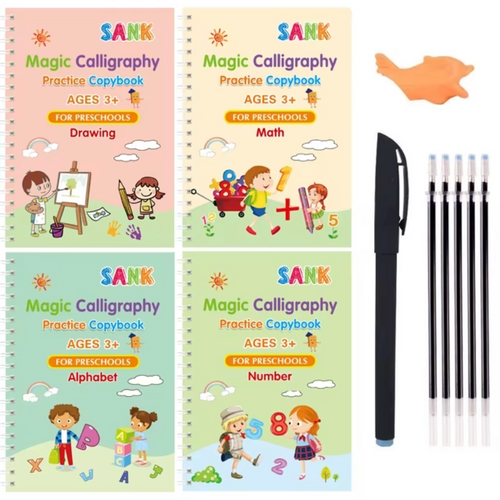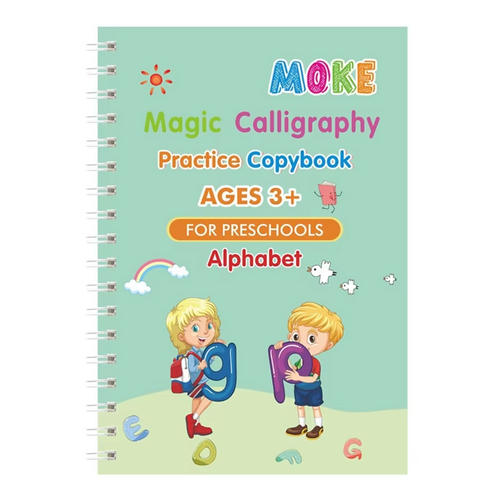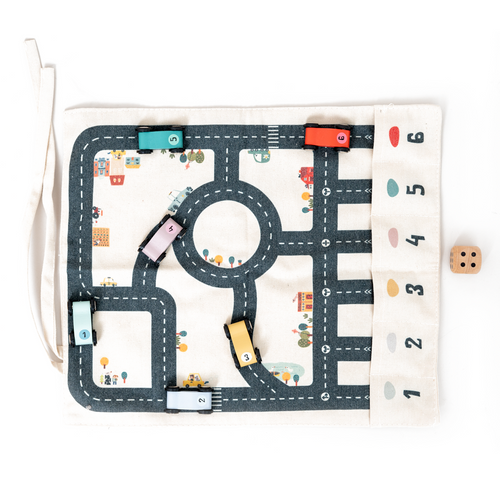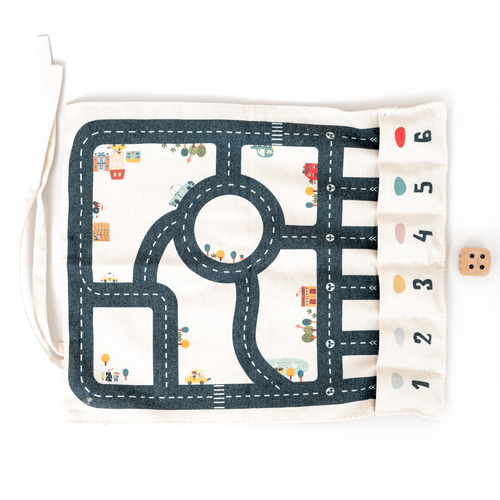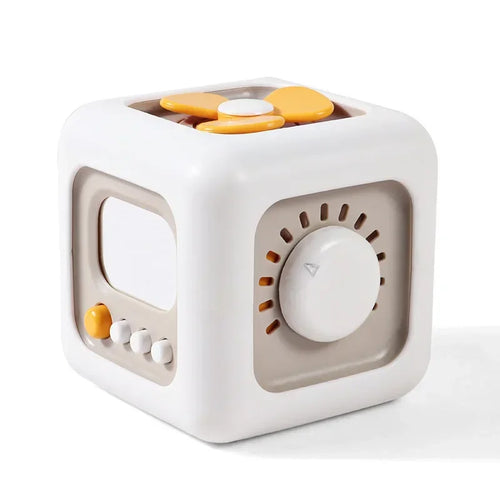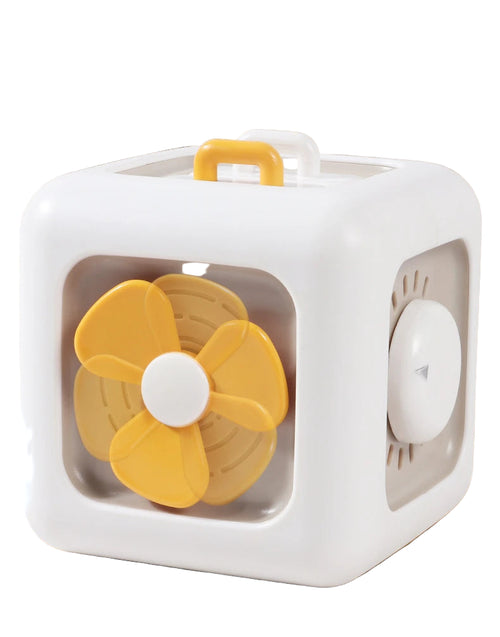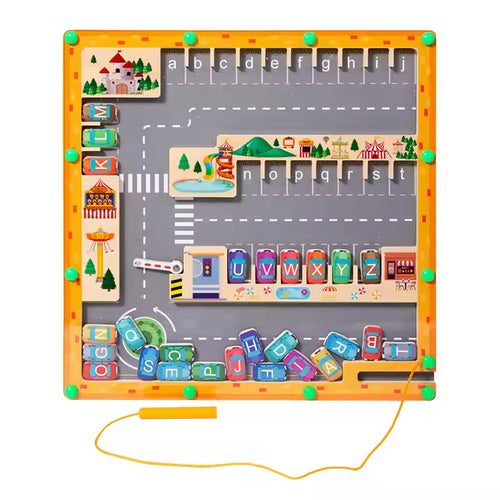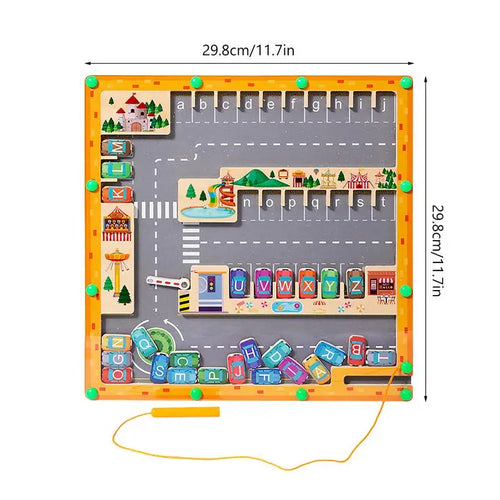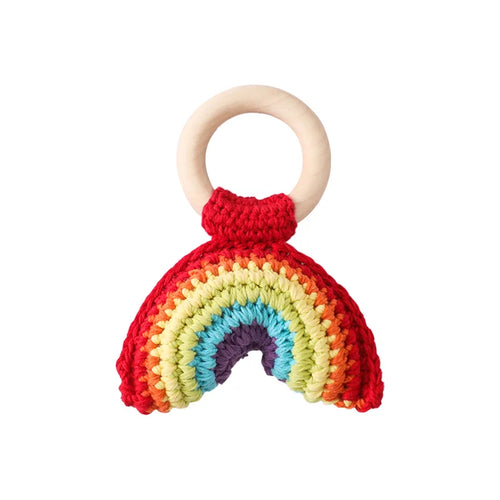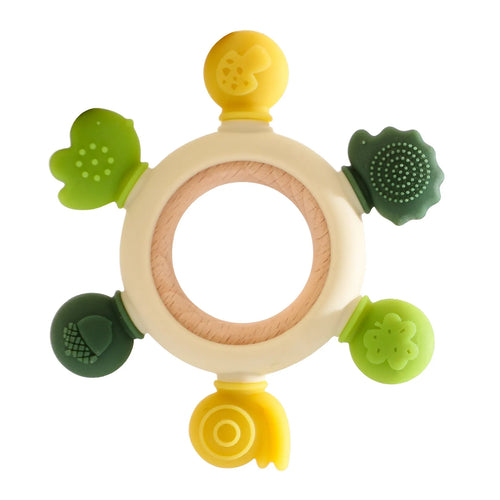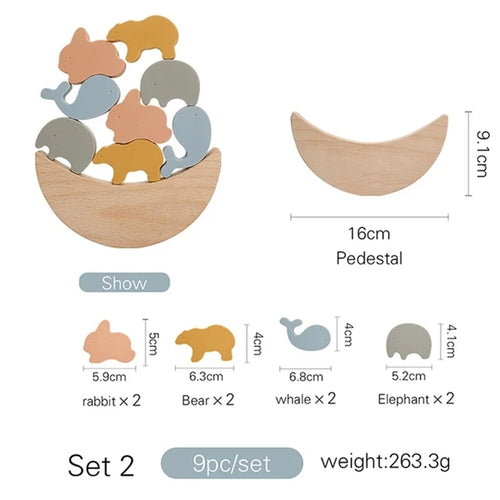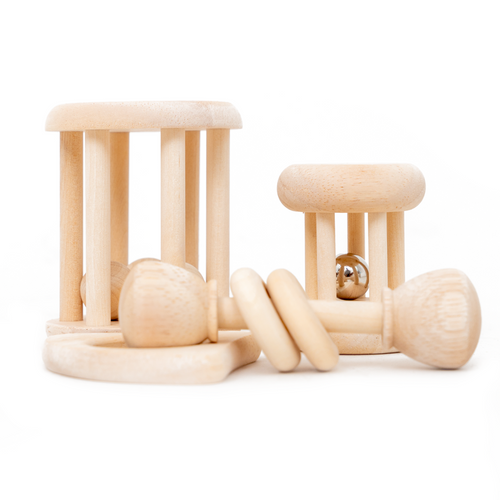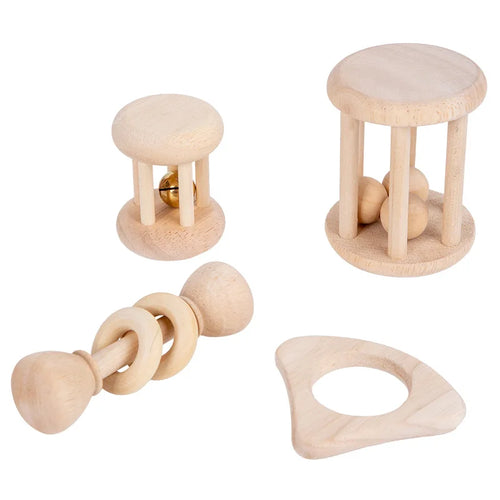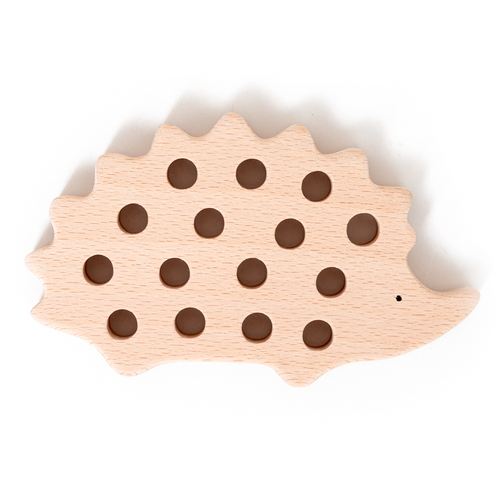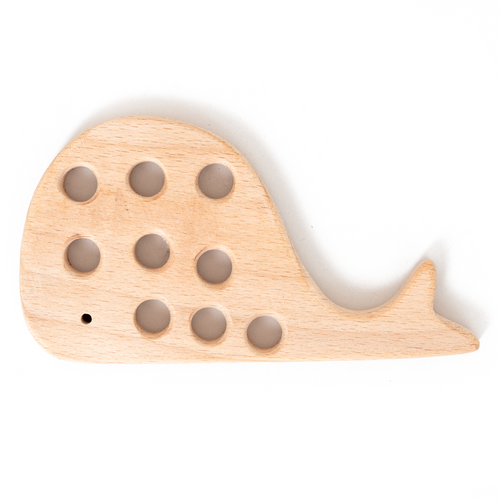
Quick wins:
- Space: two rugs side-by-side; chairs facing the same direction; defined “parking spots.”
- Materials: duplicate sets; one clear goal per tray (pour, post, match); limited pieces.
- Scripts: “I’ll wait for a turn,” “When you’re finished, may I use it?” short “narrate-what-you-see” prompts.
What is parallel play and why does it matter?
Short answer: Parallel play is when children play beside one another with similar materials but without coordinating. It looks quiet, but it’s busy work for social growth: kids practice sharing space, read body language, imitate actions, and absorb language from the “social soundtrack.” These micro-skills later unlock associative and cooperative play.
- Social comfort: proximity without pressure lowers anxiety and builds peer tolerance.
- Language & imitation: overheard words and seen actions become tomorrow’s chatter and play plans.
- Emotion coaching: children mirror peers’ triumphs and frustrations, a seed of empathy.
When does parallel play start — and what comes next?
Short answer: You’ll see parallel play around 18–24 months (and beyond). As language and impulse control grow, it blends into associative play (chatting, trading, nearby collaboration) and later into cooperative play (shared goals, rules, roles).
| Stage | Typical window | Looks like | Social skill unlocked |
|---|---|---|---|
| Parallel | ~18–36 months | Two kids, two trays; side-by-side, little talk | Space sharing, observation, imitation |
| Associative | ~3–4 years | Talk, swap, “look at mine!” | Turn-taking, simple negotiation |
| Cooperative | ~4+ years | Shared plan, roles/rules | Teamwork, conflict resolution |
How does Montessori turn parallel play into a social superpower?
Short answer: Montessori doesn’t rush kids into “playing together.” It engineers the conditions where parallel play naturally blossoms into interaction: independent work on defined mats, mixed-age modeling, duplicate materials, and tiny Grace & Courtesy scripts that make early social moves feel safe.
- Prepared space: child-sized furniture, floor mats, and shelves create clear personal boundaries that reduce clashes.
- Open-ended, non-noisy tools: real materials invite imitation and joint attention without overstimulation.
- Grace & Courtesy: short phrases (“Are you using this?” “I’ll wait.”) give toddlers the language to try social risks.
What does a “parallel-aware” home or classroom look like?
Short answer: Use the Space × Materials × Scripts framework. Prepare the room, curate the trays, then give kids a few respectful words to use.
Space: layout that lowers conflict
- Two work rugs side-by-side; chairs facing the same way; a low shelf between zones as a visual boundary.
- “Parking spots” for trays and tools; a mini broom for resets (teaches closure and respect for peers).
Materials: duplicates + one clear goal
- Two identical posting trays; two pouring sets; two sets of blocks — remove the “scarcity fight.”
- Each tray has one objective (pour, post, match, stack) and a built-in check (control of error).
Scripts: tiny phrases that unlock interaction
| Situation | Adult models | Child-friendly script |
|---|---|---|
| Wants same tray | Stand nearby, hands behind back | “When you’re finished, may I use it?” |
| Accidental grab | Gently return item; narrate | “Oops, I took it. Here you go.” |
| Inviting proximity | Model silent work next to child | “I’ll work here.” (no pressure) |
Which toys and setups best support side-by-side play without fights?
Short answer: Prefer open-ended, single-goal activities that two children can mirror at the same time. Keep volumes low and steps clear.
| Age | Try these (duplicate sets) | Why they work in parallel | Browse |
|---|---|---|---|
| 12–24m | Coin-box posting, fabric texture baskets, simple pegging | Short, repeatable motions; clear success | Montessori |
| 2–3y | Pour/scoop trays, knobbed cylinders, rough–smooth boards | One goal per tray; built-in control of error | Sensory |
| 3–4y | Color tablets, sound cylinders, simple classification | Encourages matching and early turn-taking | Language |
Related: What Are Sensory Toys? • What Are Educational Toys?
How can I scaffold turn-taking without forcing sharing?
Short answer: Don’t break concentration; make waiting visible and respectful. Teach “I’m waiting” and “When finished, may I use it?” Provide clocks/timers sparingly; prefer visual cues (a waiting mat or empty tray).
- Model parallel use of a different tray to show there’s always something purposeful to do while you wait.
- Praise the process: “You waited; now it’s your turn.”
- Keep only one copy of certain materials to teach patience; balance with duplicates of high-demand items.
How do we support neurodiverse children during parallel play?
Short answer: Reduce sensory load, keep boundaries obvious, and allow longer time in parallel. Offer headphones, a visual schedule, and a consistent seat/rug. Use rhythm (“drum-and-pause”) and “heavy work” (push a laundry basket) to regulate before group time.
- Set up two identical stations to avoid competition triggers.
- Use neutral narration: “Sam is pouring beans. You are scooping.”
- Honor preferred distance; success is proximity with calm, not conversation.
What signs show a child is ready to shift beyond parallel play?
- Spontaneous comments about a peer’s work (“Big tower!”).
- Trading tools without prompting; waiting nearby with hands behind back.
- Suggesting a joint plan (“Let’s build a road together”).
If signs aren’t appearing after lots of exposure and language growth, check in with your pediatrician or educator for tailored ideas.
Which TinyLearns guides should I read next?
- What Are Montessori Toys?
- What Makes Montessori Toys Different?
- How to Introduce Montessori at Home
- What Are Sensory Toys?
- What Are Educational Toys?
FAQ about Montessori & parallel play
Is parallel play a social activity?
Yes. It’s the first step toward group play: kids share space, observe, imitate, and practice early turn-taking without pressure.
Should I encourage my toddler to “go play together”?
No prompting needed. Prepare the space and materials; model short scripts. Interaction emerges as comfort grows.
What if my toddler only watches?
Onlooker behavior is normal and often precedes parallel play. Keep sessions short, provide duplicates, and narrate neutrally.
Do I need special toys?
No. Trays that isolate one goal (post, pour, match) work best. Duplicates reduce conflict and extend attention.
When should I worry?
If a child shows distress around peers, avoids proximity entirely over months, or loses language/skills, consult your pediatrician for guidance.
Sources & further reading
- Parallel, Associative, and Cooperative Play: Building Toddlers’ Social Skills (research overview PDF). Key visuals: the 6-stage diagram and section notes on parallel→associative transitions.
- Community/Early-years summaries of Parten’s stages; practical tips for parallel and associative play.
- Montessori classroom practices (prepared environment, mixed-age, Grace & Courtesy) from reputable Montessori training sources.

